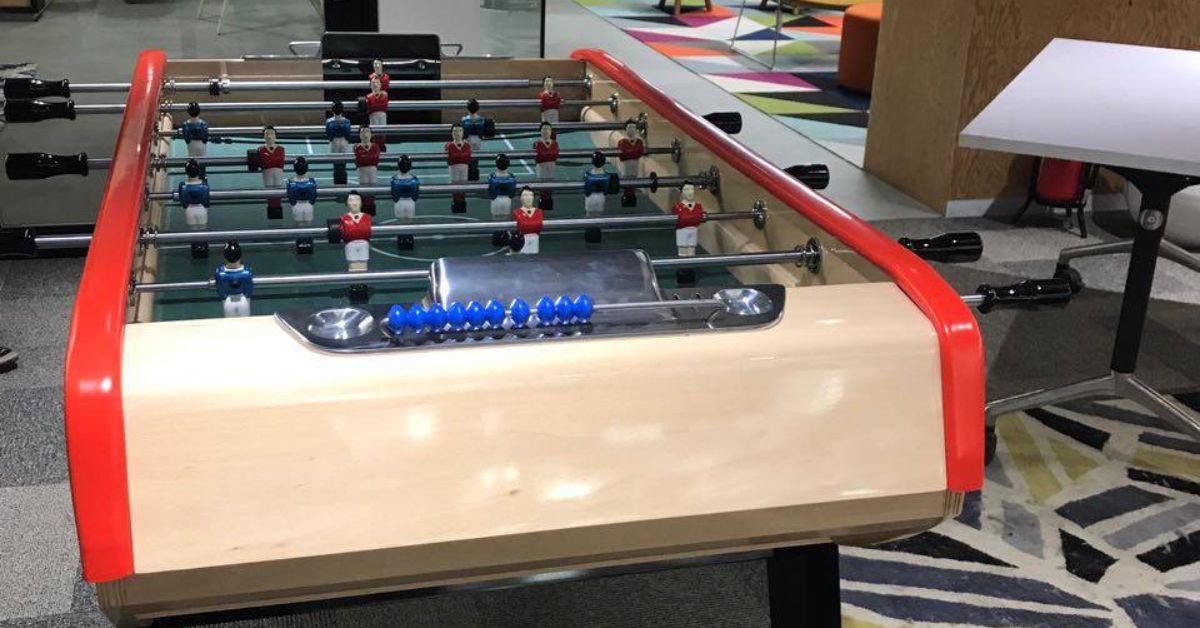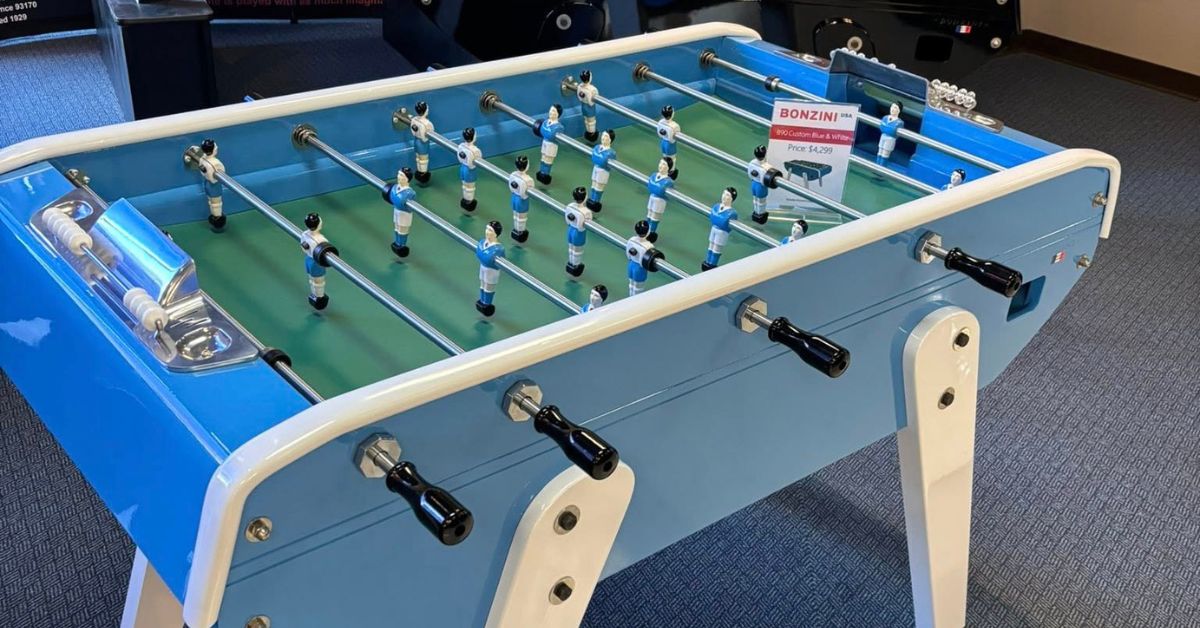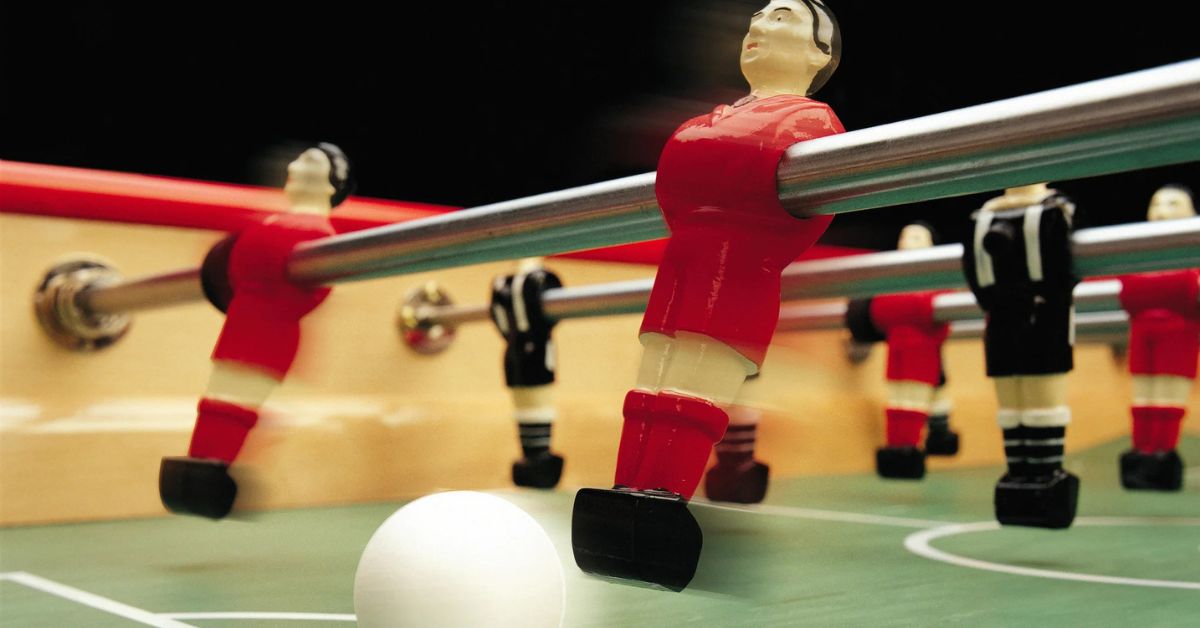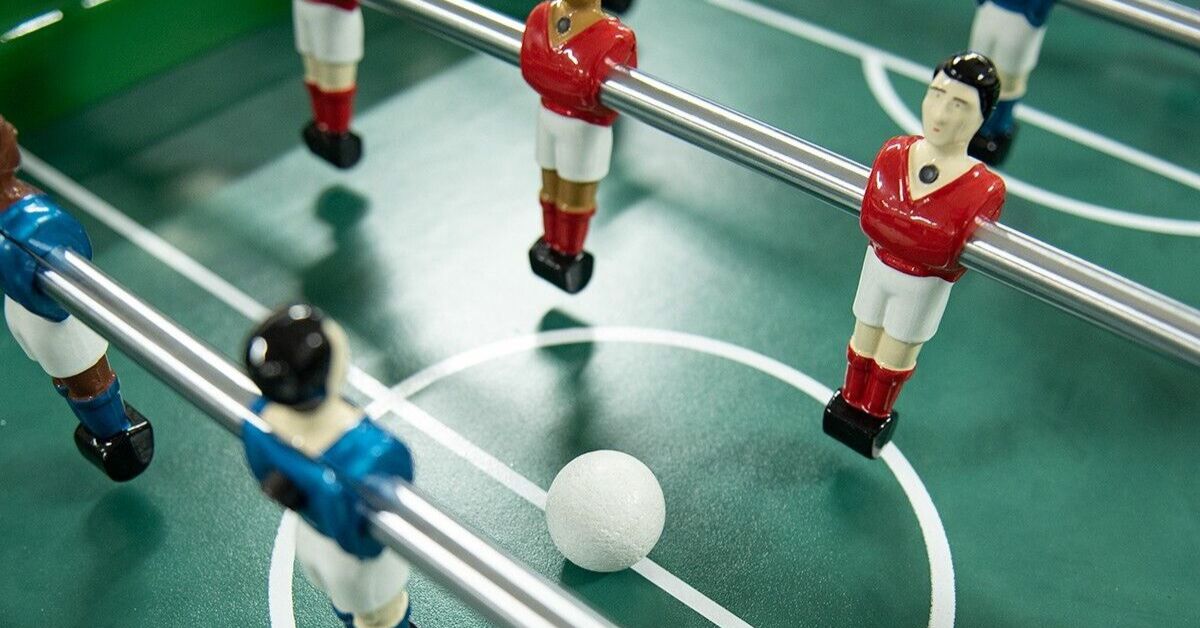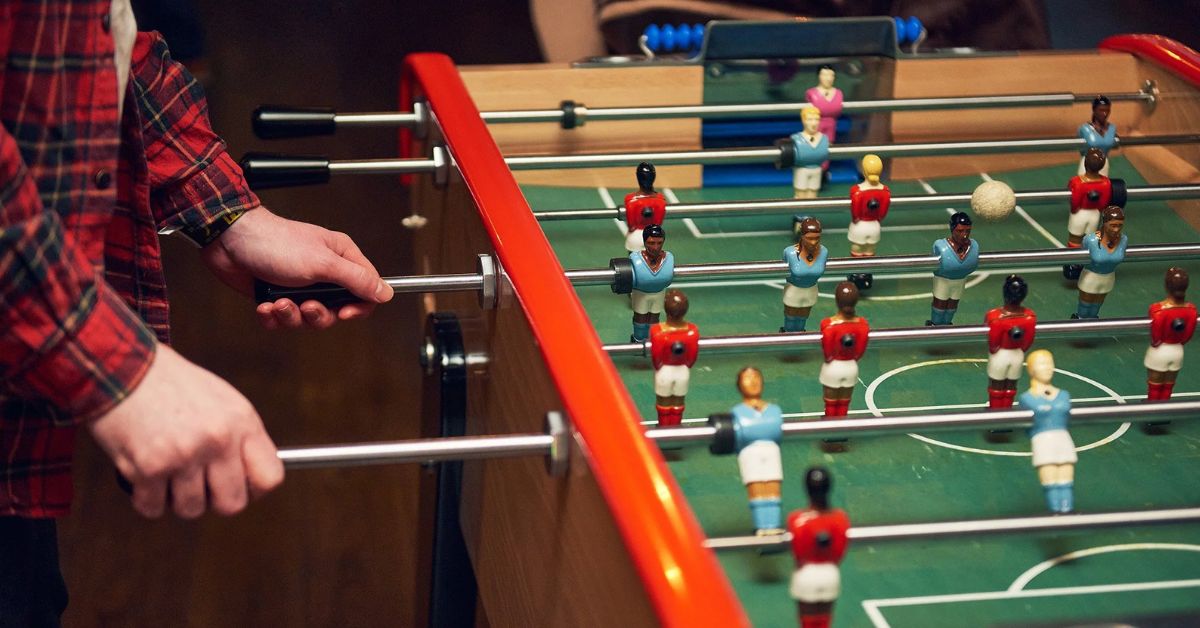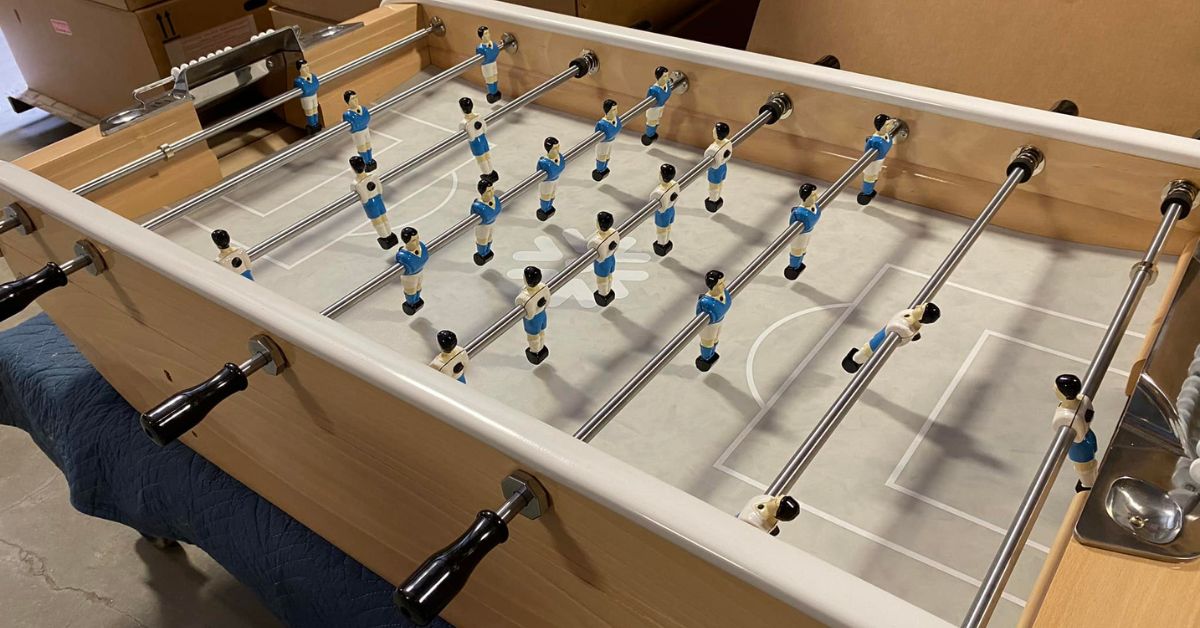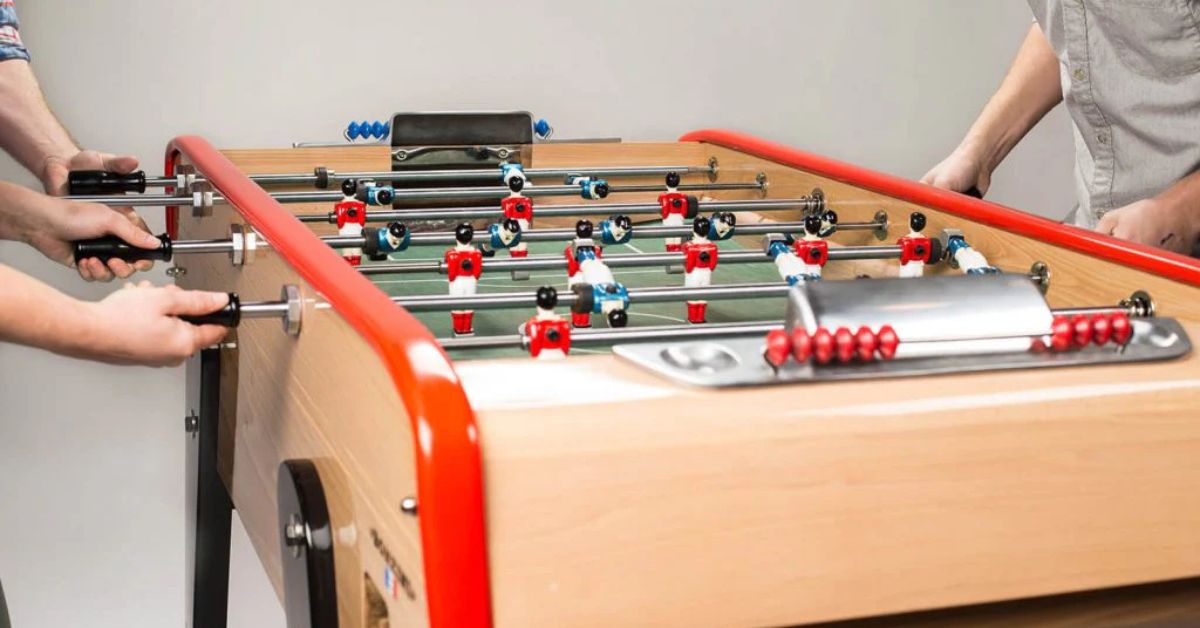Ever notice the foosball ball rolling to one side without anyone touching it? A little tilt like that can turn a game of skill into a game of luck or gravity... whatever you want to call it! A level foosball table keeps things fair and lets every player develop true skill. If you’re tired of hearing arguments between the kids about "lucky bounces," it’s probably time to focus on leveling your foosball table.
Why Level Matters
Adjusting the level of your foosball table for fair play is important because the ball naturally favors the lower side, giving an unfair edge and making those epic passes and shots way trickier to pull off. Players might notice those mysterious “ghost goals” or that one unstoppable corner. Leveling your table balances the power and evens the playing field.
Plus, it keeps the game competitive and entertaining for all, turning complaints from kids into high-fives and “let’s play again!” Don't let gravity decide who wins, and let their skill shine.
Spotting an Uneven Table
You know your table is off-kilter when the ball starts rolling on its own or games feel lopsided and in favor of one side over the other. You might notice that every match seems to “luckily” end in favor of the same person, or that passes mysteriously drift to the same corners. Frustrated players, wild shots, and groans about “unfair bounces” are instant red flags, so now you need to learn how to level a foosball table.
Grab a Bubble Level
You need a simple carpenter’s level (bubble level), or a leveling app on your phone will do. Place it on the playing surface lengthwise (goal to goal), then check it side to side. For an expert type of check, place the level in the center, on each end, and on both sides.
If the bubble’s not right in the middle, you need to adjust your table. For tech-lovers, digital levels can give a precise read, but good old-fashioned tools work great and are easy to find at any hardware store.

Using Leg Levelers
Most high-quality foosball tables, including Bonzini’s, come with adjustable leg levelers. These screw-in feet can adjust to compensate for uneven floors and give you fine-tuned control over the playing surface of your residential foosball table. Got a table sitting on a slightly sloped basement floor? Just twist the levelers to raise or lower each corner until you reach perfect leveling.
Pro tip
Check that each leg is on a solid, steady surface for the best results. Avoid placing tables in walkways or high-traffic areas, as this increases the chances of accidental bumps and frequent releveling.
Step-by-Step Adjustments
The leveling process is as easy as a quick routine anyone can handle. Once you use the bubble level to spot which side or end is lower, gently turn the leg leveler clockwise to raise the table or counterclockwise to lower it. Stick to quarter or half turns and turn slowly to prevent overshooting your mark. Check after each tweak with your level.
Sometimes the table will adjust more than you expect, especially on softer floors, so patience pays off. If you’re unsure which leg needs the most help, check from multiple angles and adjust the level and leg levers until the bubble remains in the center from every direction. Don’t be afraid to go back and forth a bit until you have it right.
Quick Final Check
Before declaring “game on,” check your table one more time. Place the ball in the center and at several different spots along the playfield. If it stays put or rolls straight when nudged, you’ve nailed it!
Staying Table-Ready
Even level foosball tables can shift over time, especially after high-energy matches, moving furniture, or cleaning sessions. Heavy use, kids climbing to get a better view, or just walking by and accidentally hitting the foosball table can nudge it out of alignment. Check before family game night, after moving the table, or if you hear renewed complaints. If your table lives in a basement, garage, or anywhere with a softer or uneven floor, check it every few weeks or before the family plays any big tournaments.
Playing Like the Pros
Even if you don't compete professionally, you can play (and practice) like the pros by keeping your table dead level. Advanced techniques, from precise five-bar passes to killer shots, rely on a reliable, even surface. If you’re training for a tournament or just want every family showdown to feel “official,” leveling is your secret weapon.
A fair table also means players can learn real techniques and improve their playing skills, rather than adapting to a table that is off. Truly sharpen your game with a home setup everyone wants to practice on!

Leveling Tips and Troubleshooting
Start with the legs and make sure none are loose or wobbly, as that can affect your adjustments. Then tighten any screws or bolts. If your floor is extremely uneven, try placing the table in different spots or use floor shims under the base of the legs for extra stability.
Keep an eye out for repeated issues,,,, like carpets or mats compressing,,,, which can change your table’s balance without warning. If you run into consistent leveling problems, reach out to Bonzini USA for expert advice or check out their troubleshooting tips online.
Keeping Things Fun
Remember, fair play foosball is about joy and skill. Let younger kids help with the “bubble check” or make it a mini family challenge to see who can spot the most subtle tilt. Share stories of “the crooked-table championship” or invent your own traditions around table maintenance. The more fun you make it, the more everyone wants to play and help keep the table level, and the better your games will be.
“Level” Up Your Game With Bonzini
Adjusting the level of your foosball table for fair play can turn frustration into hours of competition, laughter, and memorable moments. Explore Bonzini USA’s line of artisan-crafted foosball tables, including the Bonzini B90 Foosball tables, which have effortless leveling, professional-grade performance, and durable construction. Visit Bonzini USA today and secure your Bonzini B90 for sale to set the stage for endless fun and fair competition in your own home!


